Aston Martin Vantage first drive: a massive leap forwards, on road and track
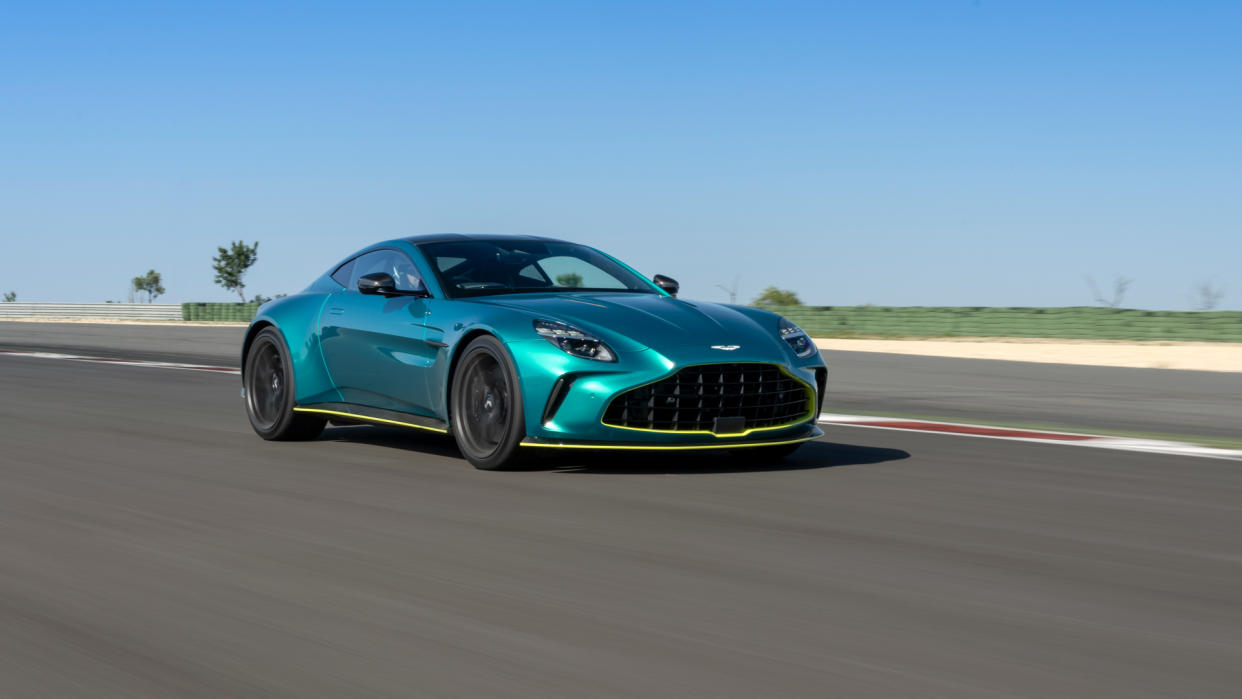
The new Vantage is a statement of intent from Aston Martin. It follows soon after the radically updated DB12 and packs 30% more power than its predecessor.
Aston says it is “engineered for real drivers” and there’s a complex stability control system, honed for use on the race track and with eight levels of assistance. The company says it wants to charge up-market, away from the likes of Bentley and Maserati, and into a league that’s home to McLaren, Ferrari and Lamborghini.
This is fighting talk and, having now driven the new Vantage for a whole day on road and track, I can report that Aston’s newfound confidence is justified.
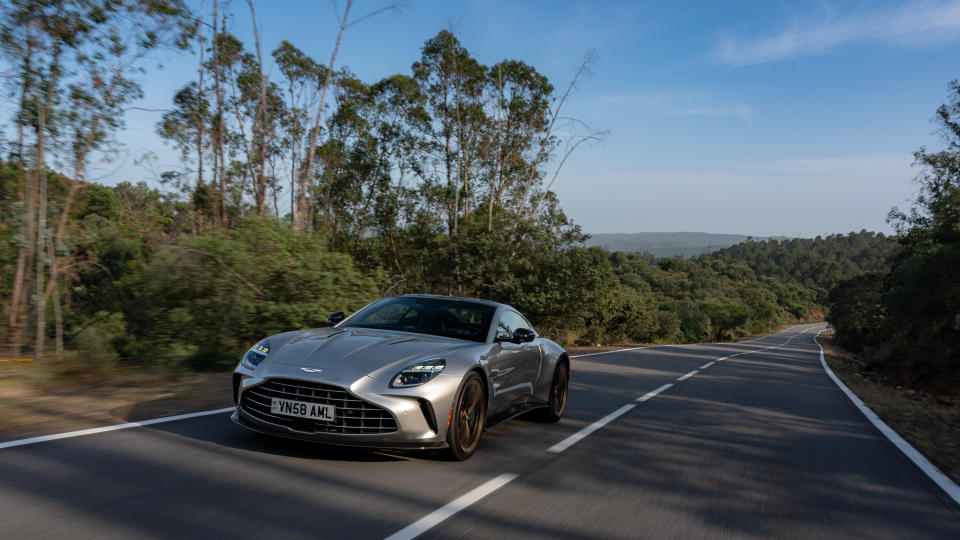
That isn’t because the Vantage has suddenly turned into a supercar. It’s still a front-engined, rear-drive, two-seat grand tourer in the traditional sense, but as well as being significantly more powerful, and therefore quicker too, it’s now noticeably sharper than before. The steering is quicker, the ride is firmer, the whole car feels more eager and alert.
The previous Vantage was no slouch – it was a hugely successful GT race car and has multiple Le Mans class wins to its name – but the standard road variant gave the impression it would rather go to the golf club than the race track. With the new car, that persona has changed.
Vantage on road
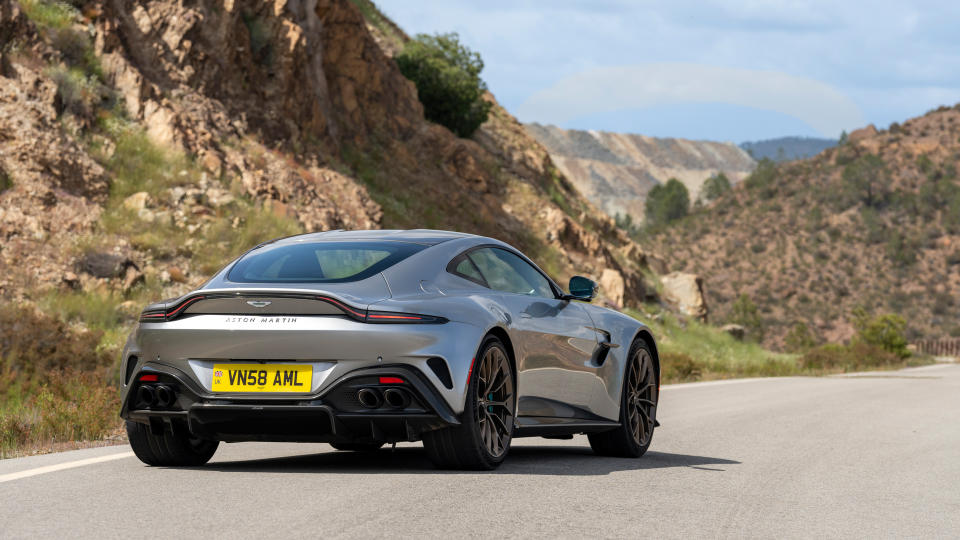
First, the road drive. This took place on a spellbinding route across some of the most beautiful roads Spain has to offer. We’re based out of the Monteblanco race track, just west of Seville in southern space. The roads here are truly spectacular, winding their way through the rolling countryside of the Rio Tinto mining region. This is Europe’s second-largest opencast mining area and home to an environment so heavily influenced by the highly acidic river Tinto, that NASA conducts studies here, since the ground is thought to be similar to the subsoil on Mars.
I urge you to go onto Google Maps and open Street View anywhere on a road called the HU-4103; wide enough, perfectly smooth, with good visibility and zero traffic – I literally didn’t see another car, in either direction, for 45 minutes – it’s the perfect environment to test out the new Vantage.
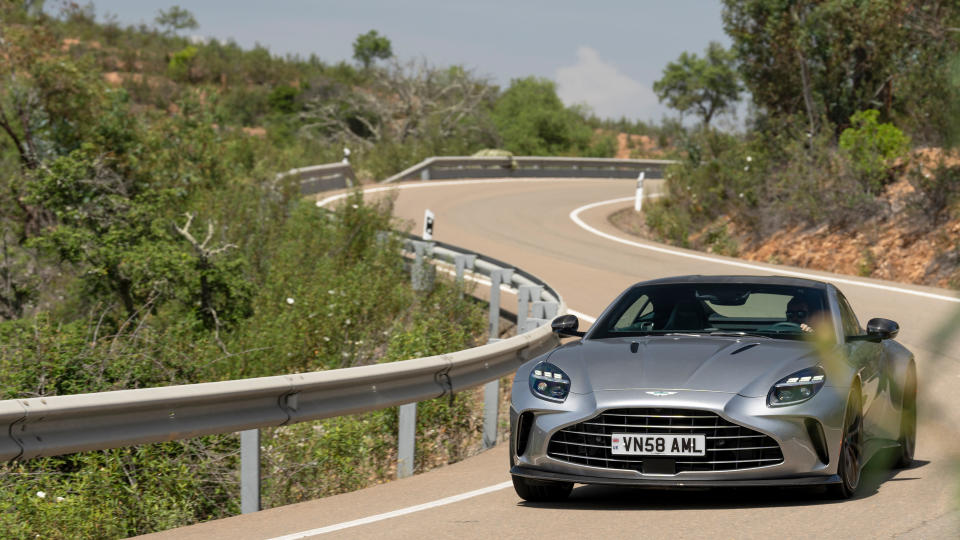
For now, I have the car in Sport mode but with the dampers slackened off to their lowest of three settings and the exhaust turned up to its most raucous (because why wouldn’t you?).
Even on these beautiful roads, the firmest damper setting is best reserved for the race track. I have the eight-speed ZF automatic gearbox in its manual mode, allowing me to flick between gears with paddles behind the steering wheel. Second, third and fourth are all that’s needed here, the V8 howling its way through each with frenetic energy, before the quad exhaust spits a volley of pops and bangs between each up-shift. Aston says it doesn’t use any sound augmentation, and that the Bowers & Wilkins stereo is not at all involved with the histrionics going on outside. The V8 sounded so good I had to check.
The car and road feel as though they were made for each other. The quick steering and bespoke Michelin Pilot S 5 tyres – their compound developed specifically for the new Vantage – make the Aston feel alert and agile, but this eagerness falls just short of the over-caffeinated character of modern Ferraris. I like how responsive the front end feels through low- and medium-speed corners, but the relatively short wheelbase and wide track of the Vantage give the impression it could quickly rotate if you’re too eager with the accelerator.
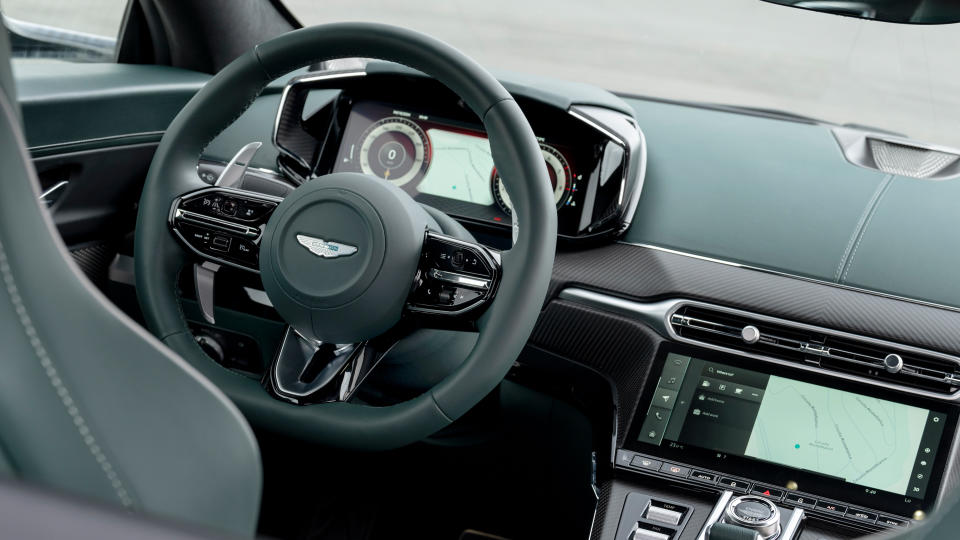
Keep your wits about you – especially with the stability control slackened off – and it’s worth remembering just how much power is under your right foot. The twin-turbocharged, 4.0-litre V8 produces 665 PS (656 horsepower) and 800 Nm (590 lb-ft) of torque. That’s more power than a Ferrari Enzo, more than a McLaren F1 and more than today’s 992-generation Porsche 911 Turbo S. It’s also 30% up on its predecessor and a massive 300 hp increase over the Vantage from 2005. The new Vantage is also 77 mm wider than that car and 85 mm longer. In just two generations, the baby Aston has grown considerably.
I’d like to think this creates a tantalising window of opportunity for Aston to produce a junior sports car below the Vantage, but in today’s bigger-is-better world that seems unlikely.
Straight-line performance is, as you’d expect, massive. Aston claims a 0-60 mph time of 3.4 seconds and a top speed of 202 mph. Given it has almost as much torque as its bigger brother, the DB12, the Vantage surges forward with a heightened sense of muscularity; the old car never felt particularly lacking in this department, being the smallest and most affordable Aston, but now it has the get-up-and-go of a supercar.
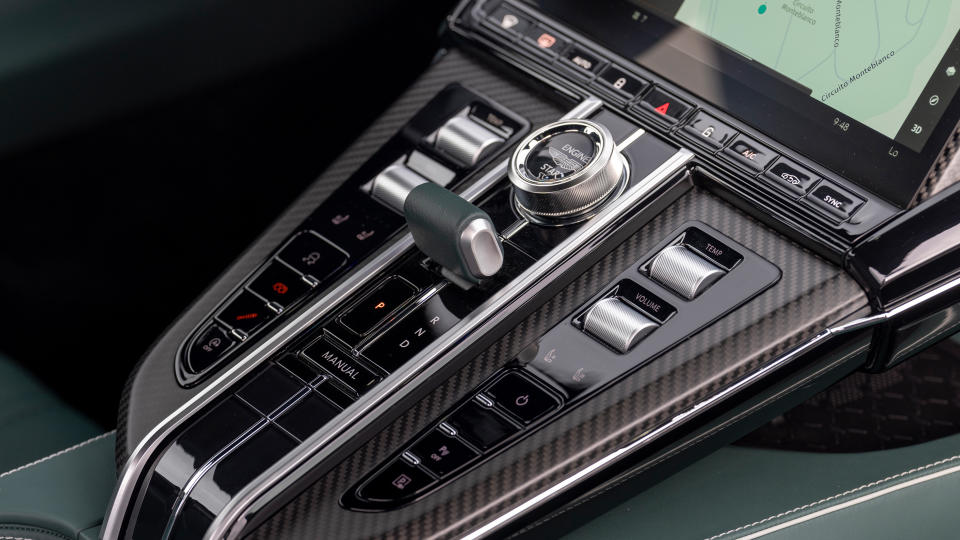
It rides like a supercar, too. On smooth, sweeping country roads that’s just what you want, but on broken town-centre streets there’s less comfort that I recall being offered by the previous Vantage. It’s not entirely uncomfortable, but this is an inherently stiffer car. And while Aston can be applauded for tightening up its cornering credentials, the Vantage is now clearly more of a sports/supercar than a comfortable GT cruiser. There’s quite some distance between its demeanour and that of the softer but more powerful DB12.
Speaking of the DB12, the new Vantage is treated to the same all-new interior. The seats are 10 mm lower than in the ‘12, and as a result, the entire cabin has been slightly repositioned, but it is otherwise entirely familiar. There’s a 10.25-inch digital driver display and an equally large touchscreen for mapping and infotainment duties. Apple CarPlay is included and the centre console features physical switchgear for key controls like drive mode, gear, cabin temperature, fan speed and media volume.
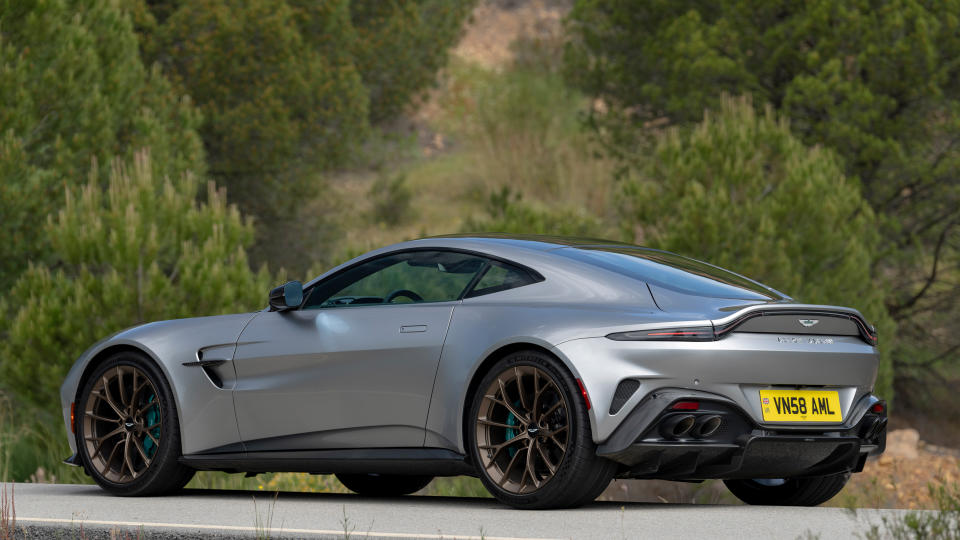
Touch-sensitive buttons take care of the exhaust and suspension settings, as well as the (optional) heated and cooled seats; I wish these buttons would physically click, but they at least issue a nice, loud bong to indicate they’ve been pressed. Overall, the Vantage’s interior serves up a carefully considered blend of touch and tactility. I’m also a big fan of the optional, 15-speaker, double-amplified Bowers & Wilkins sound system, which has aluminium double-dome tweeters and the British audio brand’s Continuum midrange drivers, plus dedicated 3D headline speakers and a subwoofer.
Vantage on track
Aston hasn’t just given the new Vantage a load more power and called it a day. There’s more focus on driver involvement than ever before, and nowhere is this more obvious than when you switch from Sport+ to Track mode. This unlocks a new, adjustable traction control system with eight stages to pick from. Positions one to four help keep the car stable when accelerating out of corners, and are best used when the track is wet, the tyres are getting too hot, or the driver is less experienced (or all three).
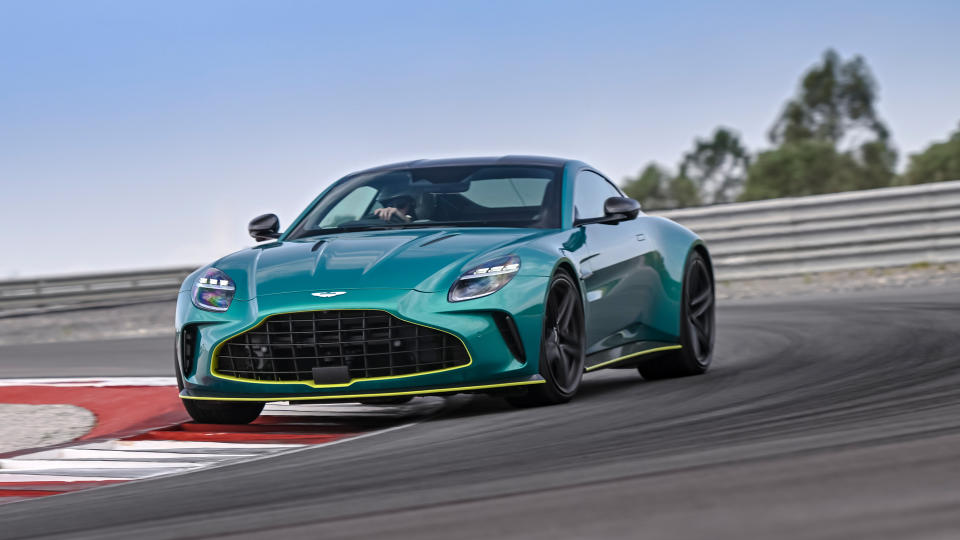
Stages five to eight are where things get interesting. The higher the number, the more slip the car will let you get away with before intervening with the safety net. As Aston says: “Oversteer can be achieved and [the] driver should react accordingly.”
I didn’t have time to really push the car to its limit, and this was my first time at the Circuito Monteblanco, but even after just a handful of laps the extra depth to the new Vantage’s character is obvious. Not only is it seriously quick – I repeatedly saw 160 mph on the 960-metre start/finish straight, before hitting the optional carbon brakes – but there’s a sense the Vantage has a broad and complex character that its driver needs time to fully explore.
It’ll bite hard if you aren’t paying attention, or get too cocky with those eight stages of traction control. But the prospect of eventually mastering a Vantage dialled all the way up is surely worth the circa-£165,000 price tag.
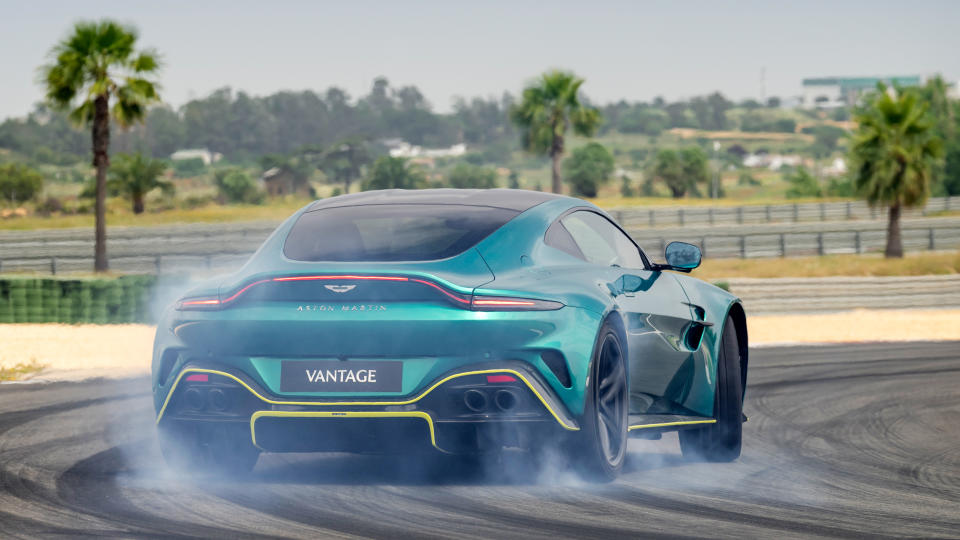
Aston is taking a similar approach here to that of Ferrari’s Side Slip Angle Control, where computer wizardry lets the driver select how much oversteer they want. The way Aston is chasing down Italian supercar royalty shouldn’t come as a surprise, since its chief technical officer, Roberto Fedeli, was Ferrari’s technical director for almost a decade.
Like the massive power increase (for both the Vantage and the DB12), this is a crystal-clear sign of intent from Aston. It no longer wants to mingle with the Maseratis and Bentleys of this world. Instead, it’s gunning for promotion into the supercar Premier League, matching its new rivals on both performance and technical ability, while retaining Aston's best-in-class design and enviable DNA.
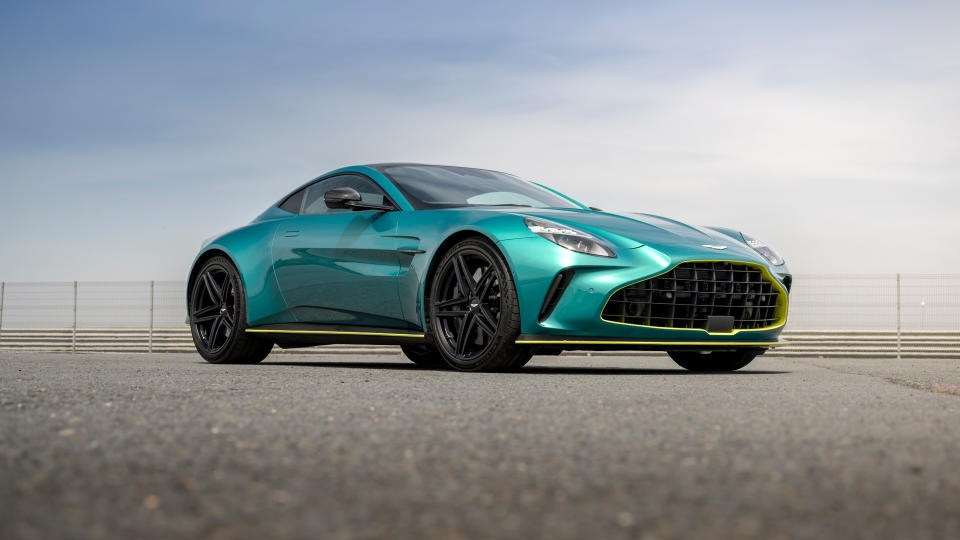
The new Vantage is a big deal for Aston. From the beautifully redesigned face and all-new interior with a massive tech upgrade over its ageing predecessor, to the extra power, clever traction control and even the set of bespoke Michelin tyres, it feels a very long way from the ‘baby Aston’ the Vantage used to be. The new Vantage and DB12 – which we recently drove in soft-top Volante form – feel like they're from a new Aston Martin. An Aston ready to take on the world.
The only question that remains is, will you go for James Bond silver or safety car green? If it’ll help make up your mind, Aston says the majority of its customers have recently switched from MI6 to F1.

